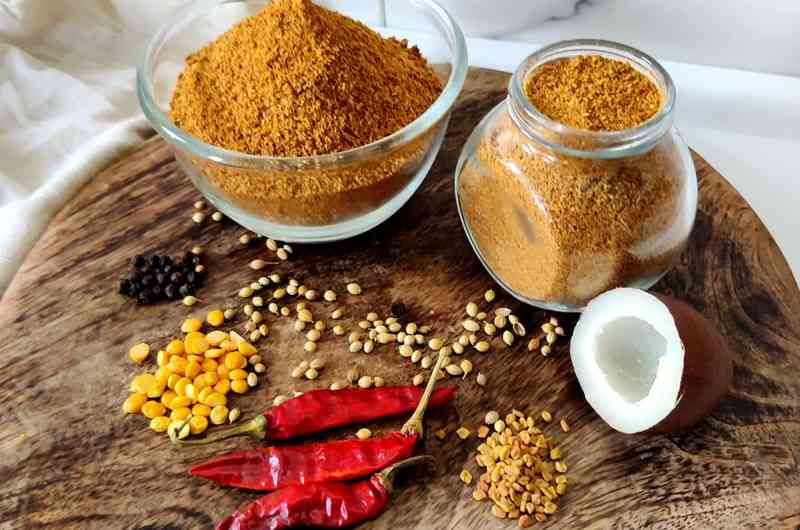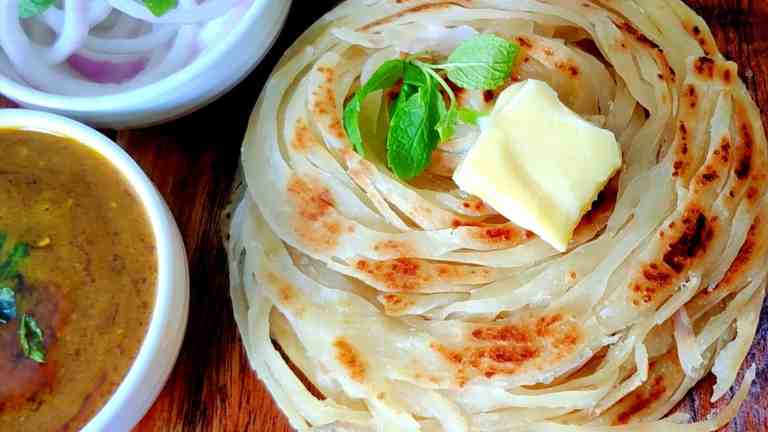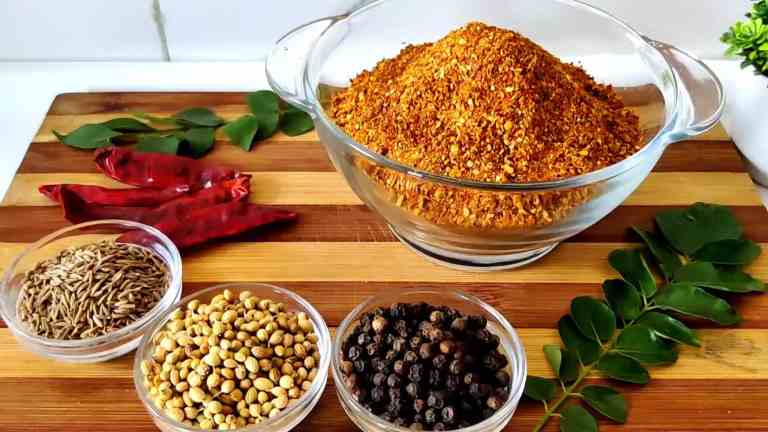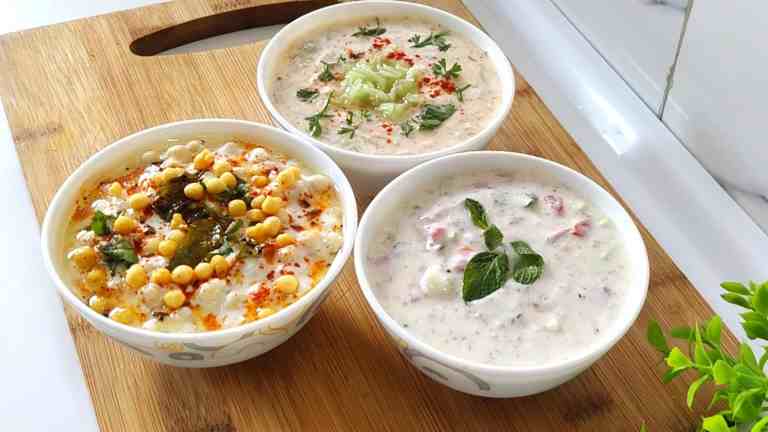Homemade Iyengar Sambar Powder Recipe (Easy and Delicious)

South Indians take their idli and sambhar very seriously. There are very few meals in this world that can be eaten every day without fatigue, and Sambar is one of them. Any good sambar recipe uses an aromatic sambar powder as its heart and soul. Without sambar powder, there is no sambar. The Iyengar Brahmins have mastered the art of spicy sambar. Iyengar sambar is such a popular dish that a commercial Iyengar Sambar powder exists to recreate the delicious flavor. Today, we will show you how to make a copycat version at home with our Iyengar sambar powder recipe.

Well, just like South Indians, sambar powders come in various shades and packages. Each recipe or brand has its own unique ratio of ingredients that imparts a subtle twist to this classical South Indian dish. While many prefer a simple blend of homemade sambar powder or a generation’s old family sambar powder recipe, many others choose the convenience of store-bought sambar powder.
Iyengar sambar powder is very popular in many households and is fast becoming a retail identity. Its fiery disposition and bold flavors leave a strong impression on the eater that is not soon forgotten.
Today, we will try to recreate this powder in our kitchen to give you a taste of home-made Iyengar sambar, but first let us have a general look at the constituents of a sambar podi (powder).
What is Sambar Powder made of ?
Sambhar powder is essentially a spice mix like an Arabic baharat mix or a garam masala mix for South Indian stews and curries. It is typically homemade, and you can easily make it in a grinder mixer, but in old times and even today, to make a large quantity, a traditional flour mill is used.
The powder itself is made of a cup of coriander seeds, some mustard seeds, curry leaves, chana dal, urad dal, turmeric powder, fenugreek seeds or methi seeds, black pepper, cumin seeds, etc. The most important ingredient, however, which also serves as the main ingredient, is dry red chilies. All these ingredients are dry roasted and ground, creating an amalgam of flavors that comes to life when stewed with dal and vegetables.
Ingredients List:

Dal
You need top-grade and preferably organic dal / lentils to make the best quality of a sambar powder. I make this powder with channa dal, and toor dal/Tuar daal, while some recipes include urad dal as well.
Whole Spices
The main ingredients for this mix are fenugreek seeds, mustard seeds, coriander seeds, curry leaves and black pepper.
Powdered spices
You need some turmeric powder for the recipe, which enhances the taste and acts as a preservative. You can also use dried turmeric roots, but you have to separately hand grind them first.
Red Chili
You need high quality dry red chilies for the recipe. Make sure that the chilies have no moisture left in them. To test this, they should break easily with a crackling sound. The Iyengar version uses a huge amount of dry red chilies, so be careful if you do not like heat.
Cinnamon
The retail Iyengar Sambar powder has cinnamon added to it as the last ingredient. This is an unusual ingredient in South Indian cooking, but adds an interesting depth of flavor when combined with red chilies
Asafoetida or Hing
This is for the characteristic pungent flavor. You can use asafoetida cubes or even the powdered form. Leave this out if you want a gluten-free sambar powder.
Coconut
Dry coconut adds oils that solubilize the aromatic oils in the spices. The coconut also adds a deep earthy flavor.
Cooking Directions for Iyegar Sambar Powder
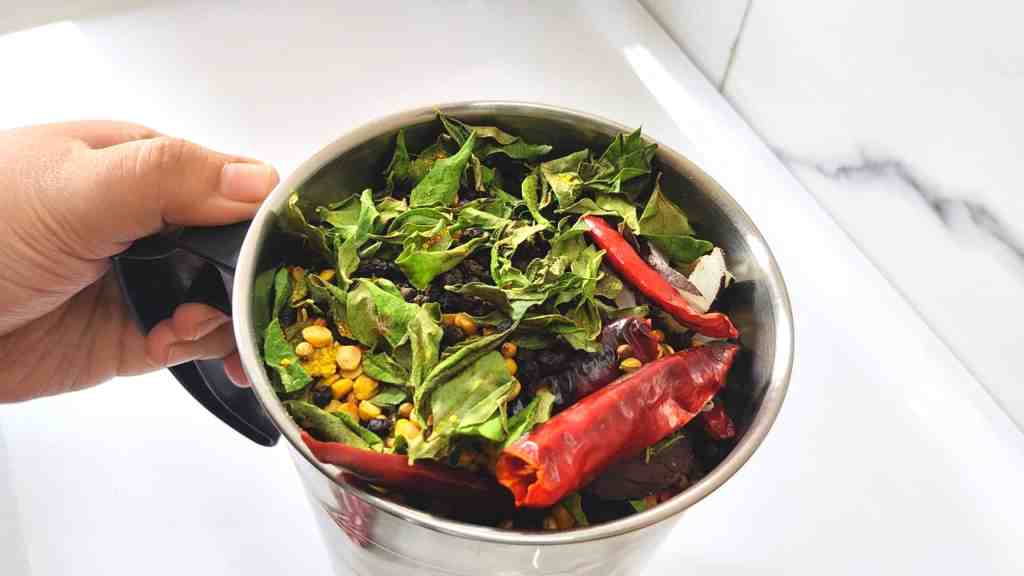
Take a kadahi, cast iron wok, or any deep heavy bottomed pan and heat it on medium heat. For smaller batches, you can use a frying pan.
Remember that you want to dry roast all the ingredients without burning them, so control the level of flame accordingly.
Add coriander seeds to the wok and start roasting them, once they are nicely golden and fragrant, dish them out in a big tray so that they cool down.

Next up, add black pepper corns and a small piece of a cinnamon stick, roast them and take them out.

Then add chana dal. Make sure to keep the stove on medium so the chana turns a golden brown color. Keep stirring to avoid burning.

Repeat the same process for toor dal.

Then add fenugreek seeds, roast them and take them out.

Repeat this for mustard seeds as well.

Then add the dried coconut. Make sure the coconut is completely dry. Otherwise, it will start releasing oil and fluid. Roast it and take it out.

Next up, dry roast asafoetida and curry leaves until they are crunchy.

In the end, dry roast the red chilies and add a little salt to prevent smoke.

Then let all the roasted ingredients cool down and come to room temperature.
Grind all the ingredients to achieve a fine powder and add a pinch of turmeric.

Sift through a sieve or mesh strainer to achieve a fine powder. Your sambar powder is ready

Storage and Use:
Once your aromatic sambar powder is ready, and you feel like a Michelin star chef, it is time to store it. Remember to always store it in a glass jar or an airtight container. You can store it in the refrigerator for up to six months and at room temperature for up to three months.
I personally don’t recommend storing it for too long because fresh batches always taste better. So make it for just two-three months. Always use a clean, dry spoon to take out the spice mix.
To use for a serving of 4-6 people, 1-2 tsp of this powder is enough, but this varies from kitchen to kitchen, and you can adjust according to your taste buds.
Disclaimer:
Remember that this is a copycat Iyengar sambar powder that we recreated using deduction. The taste can vary compared to the brand. However, just like the packaged one, this one turns out spicy and hot, so adjust the quantities accordingly.

Hi! I’m Ravi Kumar.
I am a husband, father of 4, board certified neurosurgeon, and a lover of South Indian Food!
I created PaattisKitchen.com to memorialize the most delicious foods on earth. South Indian food is easy to make and hard to mess up. So pull up your sleeves, and come with me as we explore the vibrant spices, colors, aromas, and flavors of South Indian culinary tradition.

